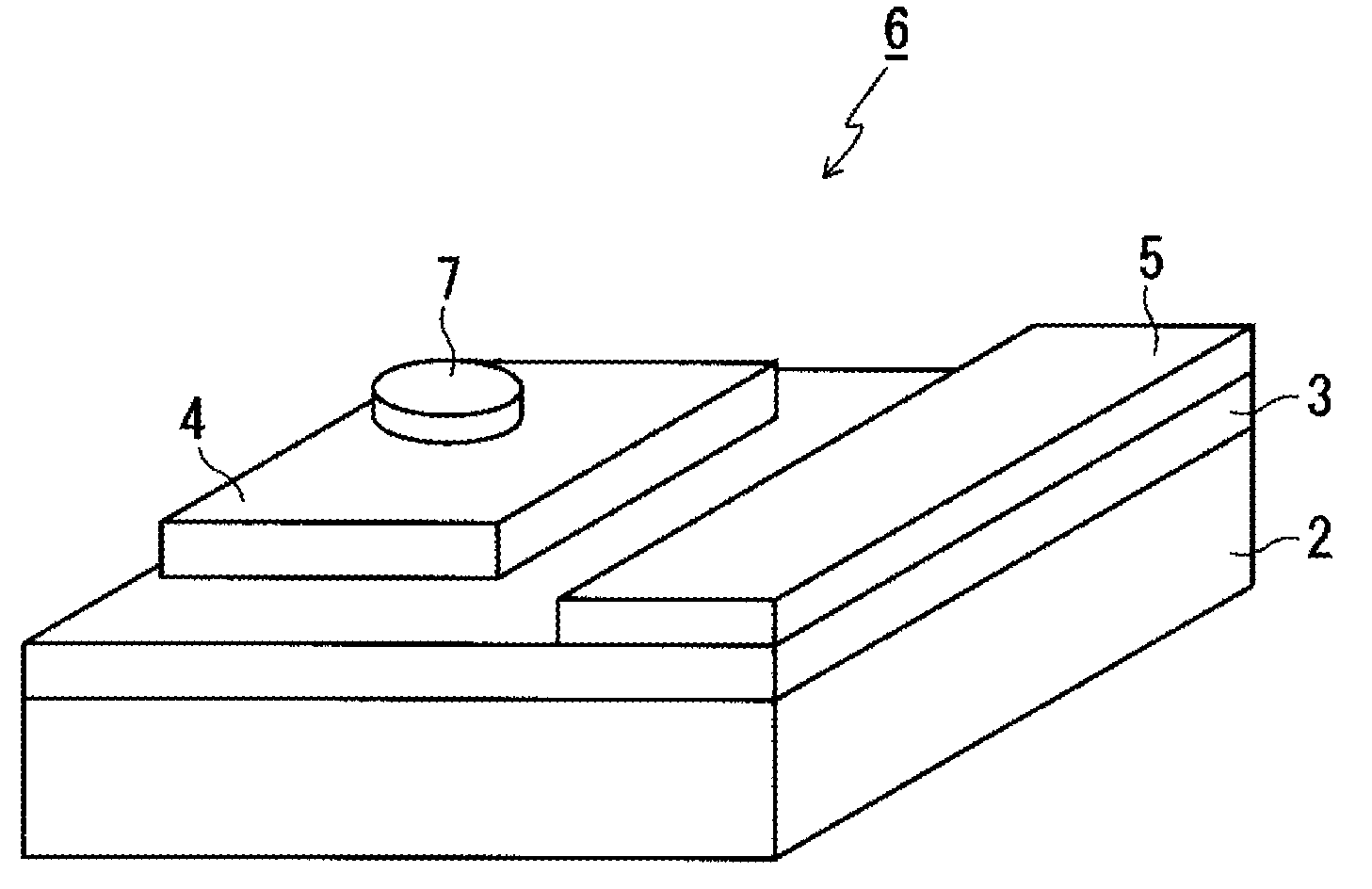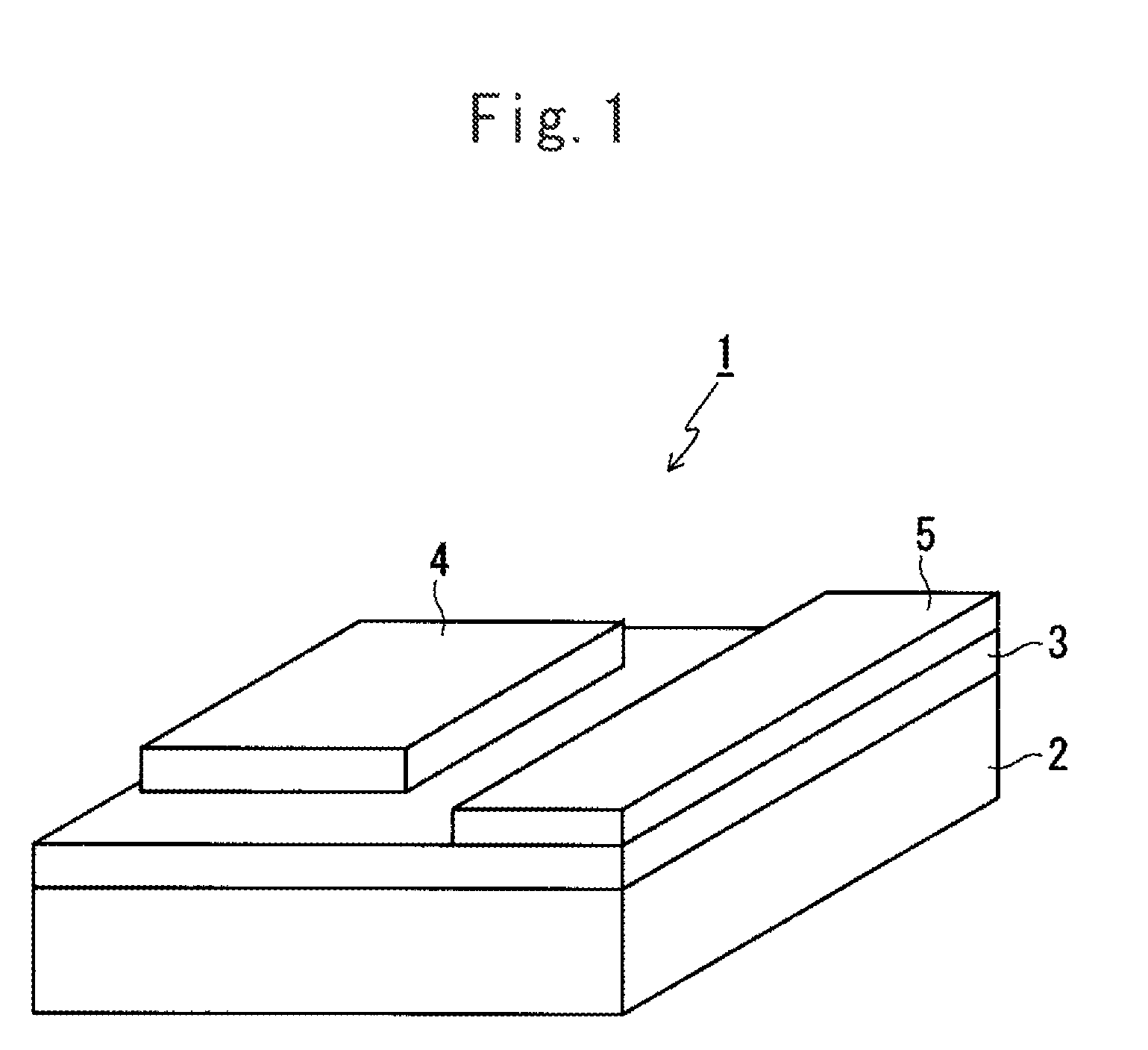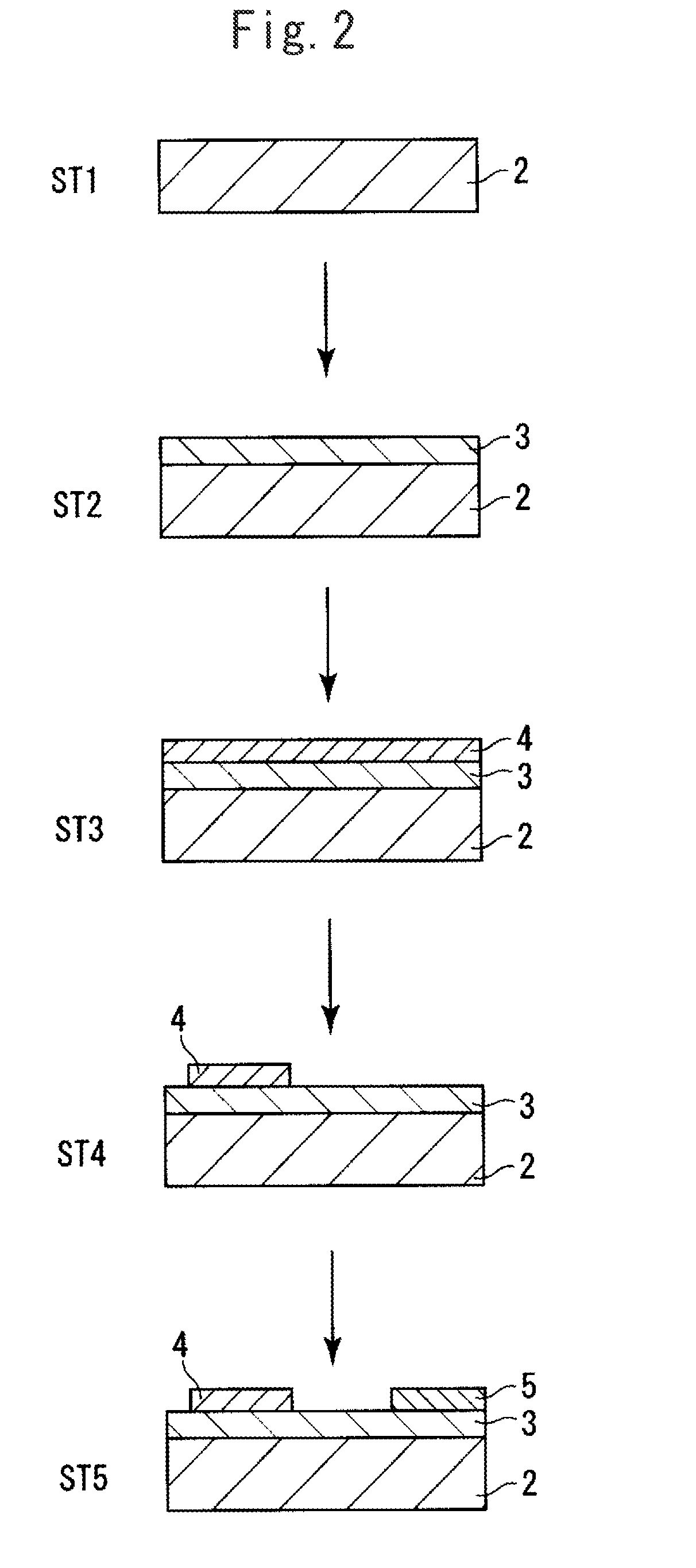Schottky-barrier junction element, and photoelectric conversion element and solar cell using the same
a photoelectric conversion element and junction element technology, applied in the direction of electrical apparatus, solid-state devices, semiconductor devices, etc., can solve the problems of difficult practical use, limited sensitivity of wavelength region allowing elements to have photoelectric conversion elements less than 380 nm, etc., to achieve effective use of photoelectric effect in visible light range, high light transmittance, and good performance
- Summary
- Abstract
- Description
- Claims
- Application Information
AI Technical Summary
Benefits of technology
Problems solved by technology
Method used
Image
Examples
example 1
[0045]A solar cell having the same structure as the one shown in FIG. 1 was made. The solar cell will be described by referring to FIG. 1. The solar cell 1 of this example includes a sapphire substrate 2, a GaN film 3 provided on the substrate, and an organic conductor (ORMECON) 4 and an indium electrode 5 aligned on the GaN film 3.
[0046]FIG. 2 shows the flow of manufacturing the solar cell shown in FIG. 1.
[0047]In step ST1, a sapphire (0001) substrate 2 was prepared. In step ST2, using trimethyl gallium, ammonia, and hydrogen as raw materials, epitaxial growth of gallium nitride (GaN) was promoted by the organic metal vapor phase growth method until a thickness of 3 μm was obtained to form a GaN film 3 on the sapphire (0001) substrate 2. In Example 1, a commercially available sapphire substrate 2 having a GaN film 3 on its surface was used. This sapphire substrate 2 was n-GaN epitaxial wafer (wafer No. PT01AB04H26491121) (POWDEC K.K.) with an undoped layer having the thickness of 1...
example 2
[0057]FIG. 7 is a perspective view illustrating the structure of a solar cell 6 related to Example 2. The solar cell 6 is structured with a transparent conductive oxide 7, organic conductor 4, and inorganic semiconductor 3 interfaced together. The solar cell 6 includes: a sapphire substrate 2; a GaN film as an inorganic semiconductor 3 provided on the sapphire substrate 2; ORMECON (highly-conductive polyaniline-series organic solvent solution) as the organic conductor 4 and an indium electrode 5 aligned on the inorganic semiconductor 3; and a transparent conductive oxide 7 provided on the surface of the organic conductor 4.
[0058]FIG. 8 illustrates the manufacturing process of the solar cell 6 shown in FIG. 7.
[0059]In step ST6, a sapphire substrate 2 was provided, in step 7, a GaN film was formed on the sapphire substrate 2 as the inorganic semiconductor 3, and in step 8, an organic conductor 4 was formed on the GaN film as the inorganic semiconductor 3, all of which are the same as ...
example 3
[0067]As Example 3, an element was made following the same procedure as Example 1, with a non-doped GaN film having the thickness of 1 μm used as the inorganic semiconductor 3, PEDOT:PSS having the thickness of 10 μm as the organic conductor 4, and an Ag film having the thickness of 100 μm as the electrodes 5.
[0068]Similar to Example 1, the current / voltage characteristics were measured to calculate the current density / voltage characteristics. With the element manufactured in Example 3, the ideal diode value n was 1.8, ideal saturated current density J0 was 6.5×10−12 A, and the Schottky barrier height fB was 1.8 eV.
[0069]Similar to Example 1, current / voltage measurement was conducted while the light of the xenon lamp was irradiated, and the voltage at open end VOC, short-circuit current Isc, maximum output Pmax, and fill factor FF were found to be 0.44 V, 3.84 nA, 0.64 nW, and 0.38 respectively.
[0070]Table 2 summarizes the results of Example 1 to Example 3.
TABLE 2Example 1Example 2Ex...
PUM
 Login to View More
Login to View More Abstract
Description
Claims
Application Information
 Login to View More
Login to View More - R&D
- Intellectual Property
- Life Sciences
- Materials
- Tech Scout
- Unparalleled Data Quality
- Higher Quality Content
- 60% Fewer Hallucinations
Browse by: Latest US Patents, China's latest patents, Technical Efficacy Thesaurus, Application Domain, Technology Topic, Popular Technical Reports.
© 2025 PatSnap. All rights reserved.Legal|Privacy policy|Modern Slavery Act Transparency Statement|Sitemap|About US| Contact US: help@patsnap.com



